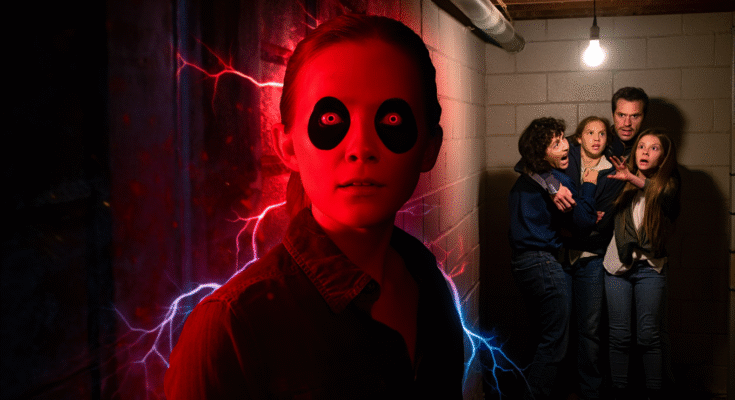Horror franchises have a way of overstaying their welcome, but the Insidious saga has always found ways to reinvent itself. With Insidious 6 (2025), Blumhouse dares to pull audiences back into The Further once more, and what unfolds is both a chilling continuation and a bold reorientation of the series. This sixth entry doesn’t simply recycle its haunted-house formula — it deepens the mythology, sharpens the scares, and gives longtime fans something that feels both familiar and unsettlingly new.
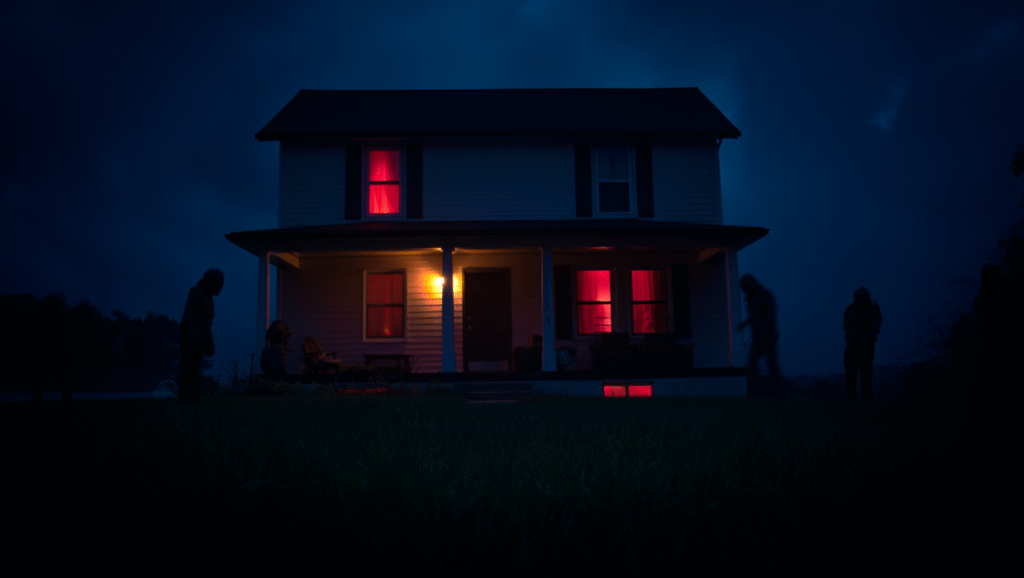
From the outset, the film signals its intent to go darker than its predecessors. Gone are the safe rhythms of predictable jump scares; instead, director Adam Robitel crafts a suffocating atmosphere that gnaws at the senses. The opening sequence — a silent tracking shot through a decaying suburban home, where shadows breathe and walls seem to listen — instantly announces that the franchise has rediscovered its confidence.
At the core of the story is a fractured family line once again tethered to the terrors of The Further. Though the Lamberts remain part of the lore, this installment shifts focus to a new protagonist: a teenage girl whose nightmares draw her unwillingly into the same otherworldly realm that haunted Josh and Dalton. Her connection to the Red-Faced Demon is teased from the very first act, making it clear that this film isn’t just a continuation — it’s a reckoning.
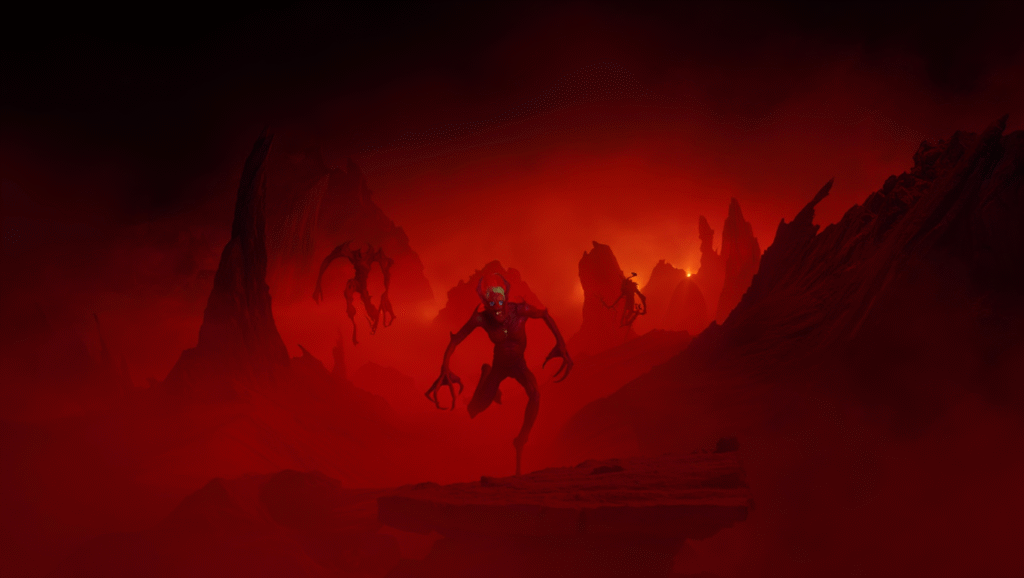
What elevates Insidious 6 is its careful balance between mythology and immediacy. The Further, once a vaguely defined dreamscape, is rendered with more menace than ever. Its distorted corridors and whispering voids feel tactile, like a malignant presence pressing against the screen. Yet, the film resists over-explaining. Instead of neat exposition, the mysteries are allowed to fester, leaving the audience disoriented in the best possible way.
Performances are a major strength. The young lead (newcomer whose name will undoubtedly be remembered after this role) grounds the supernatural chaos with raw vulnerability. Meanwhile, Patrick Wilson and Rose Byrne return in key supporting roles, providing emotional continuity and reminding us how deeply the franchise is rooted in family trauma. Their presence is a reminder that hauntings don’t just fade — they linger across generations.
Scares in this installment are less about sudden shocks and more about dreadful inevitability. A slow-burn sequence involving a mirror that doesn’t quite reflect reality is a masterclass in tension. Another scene, set in a hospital where the lights fail one by one, feels like the franchise at its most inventive since the first film. These moments don’t just scare — they unnerve, leaving an aftertaste that follows viewers home.
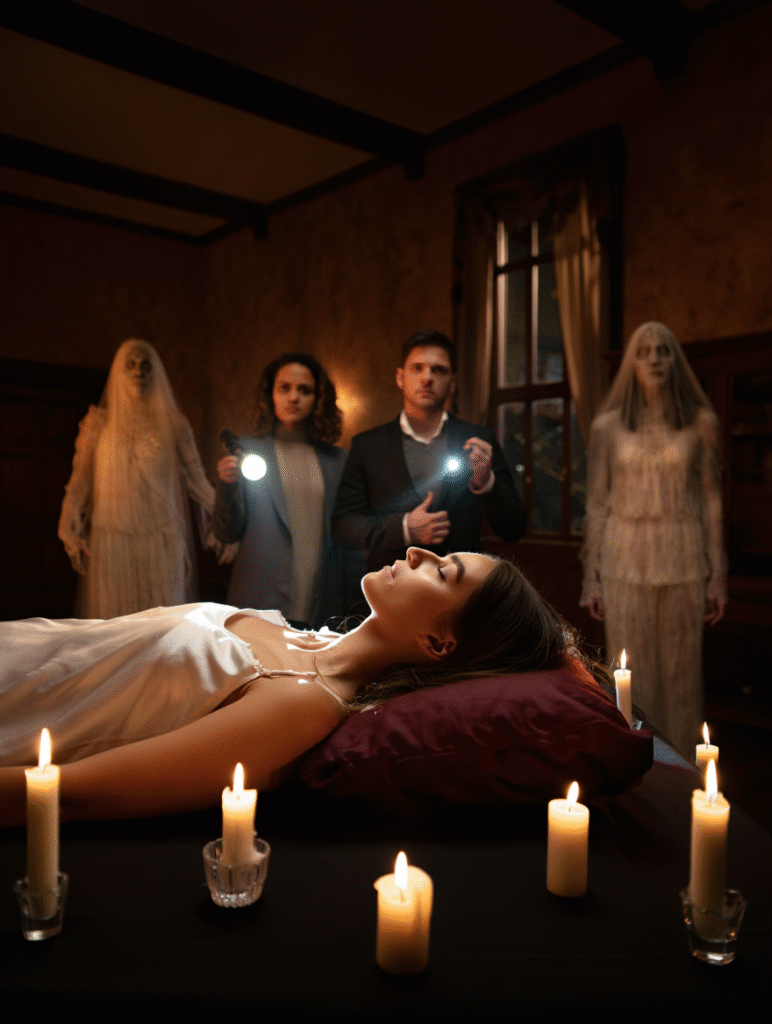
Where Insidious 6 falters slightly is in pacing. The middle act meanders with subplots that dilute the momentum, particularly an investigation thread involving paranormal researchers. While these sections offer lore for die-hard fans, they occasionally drag. Thankfully, the film regains its stride in the third act, delivering a crescendo that ties together the franchise’s loose threads with surprising elegance.
The Red-Faced Demon, always the series’ most iconic presence, looms larger here than he has in years. Instead of being reduced to a simple bogeyman, the film reestablishes him as the embodiment of The Further’s malevolence. His encounters with the protagonist are staged like twisted rituals, making every appearance feel monumental rather than gratuitous.
Visually, the film is striking. Robitel and his team drench scenes in oppressive shadows, but the cinematography avoids clichés by playing with depth and silence. The Further’s design this time is both minimalist and expansive, giving it the uncanny quality of a dream that refuses to end. The score, with its discordant violins and oppressive drones, amplifies the unease without ever overwhelming the images.
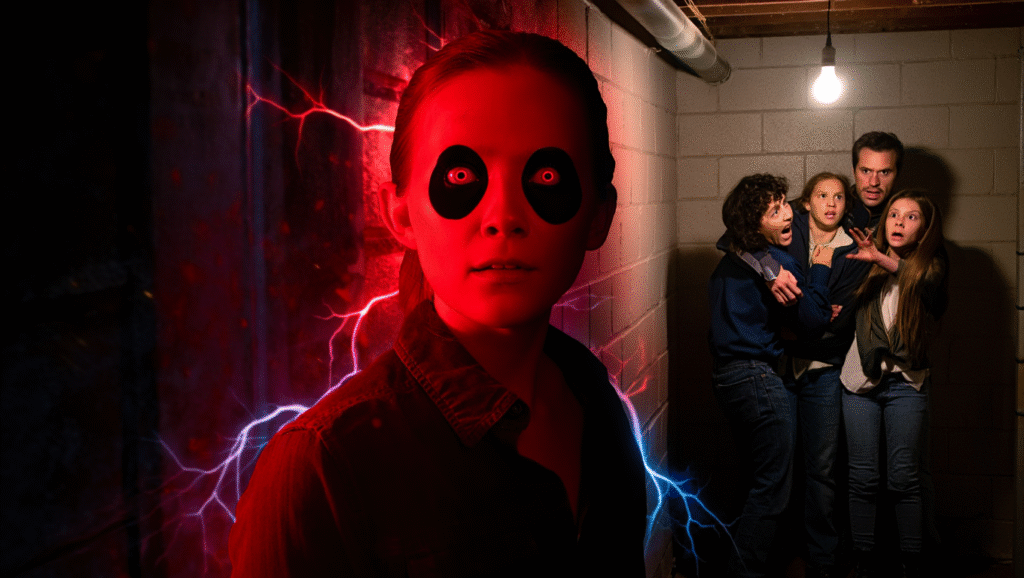
By the climax, Insidious 6 manages something rare for a horror sequel: it feels conclusive without being final. It pays homage to the saga’s beginnings while opening doors — quite literally — to new horrors yet unseen. It reminds us that the true terror of Insidious isn’t the monsters hiding in the dark, but the way trauma, grief, and fear bleed across time and space.
In the end, this sixth entry emerges as one of the franchise’s strongest installments. It doesn’t just rely on nostalgia or cheap thrills; it dares to expand the nightmare, challenging viewers to confront the unknown alongside its characters. Insidious 6 (2025) proves that The Further still has depths worth exploring — and terrors still waiting to be unleashed.
